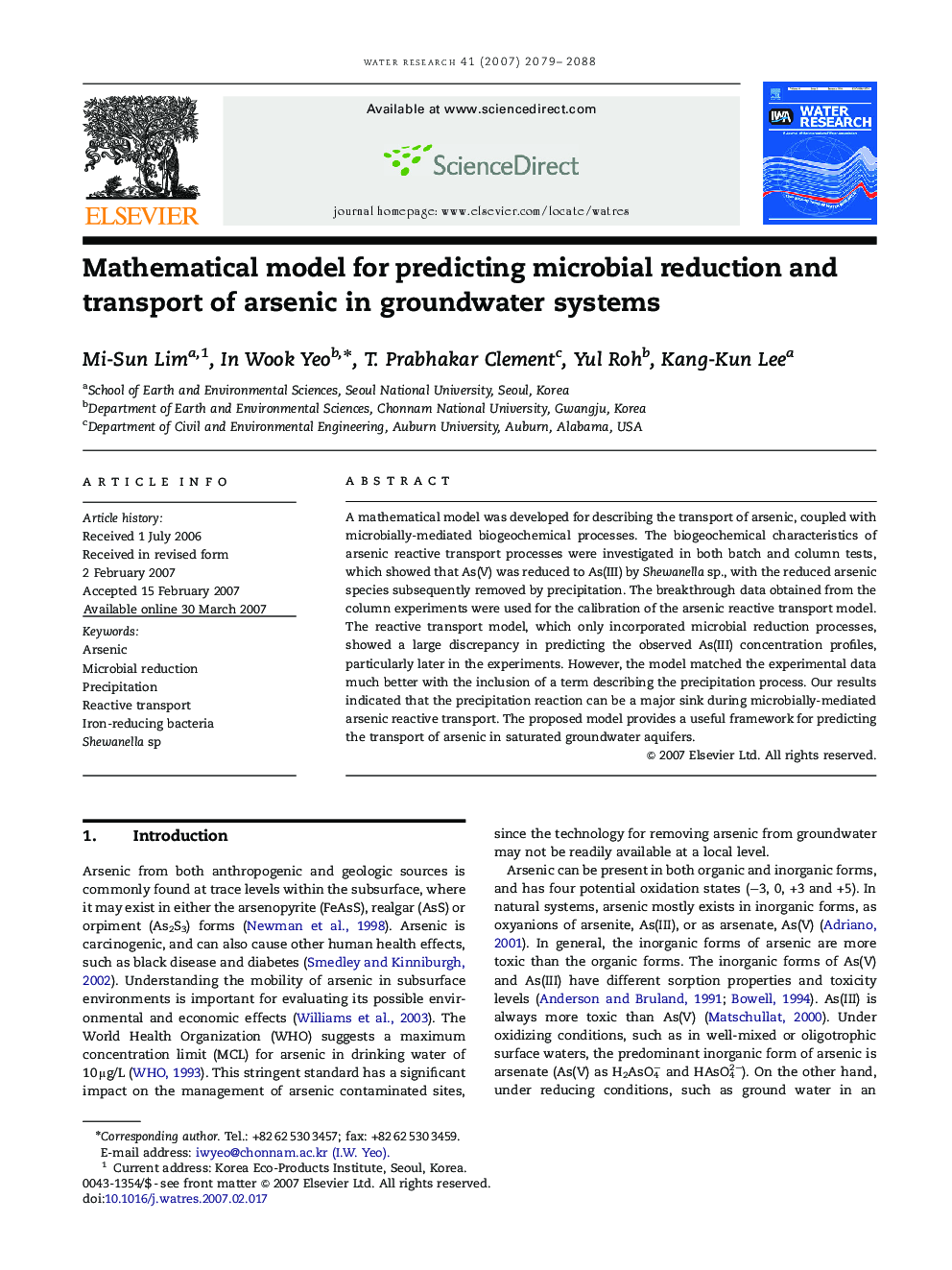| Article ID | Journal | Published Year | Pages | File Type |
|---|---|---|---|---|
| 4486282 | Water Research | 2007 | 10 Pages |
A mathematical model was developed for describing the transport of arsenic, coupled with microbially-mediated biogeochemical processes. The biogeochemical characteristics of arsenic reactive transport processes were investigated in both batch and column tests, which showed that As(V) was reduced to As(III) by Shewanella sp., with the reduced arsenic species subsequently removed by precipitation. The breakthrough data obtained from the column experiments were used for the calibration of the arsenic reactive transport model. The reactive transport model, which only incorporated microbial reduction processes, showed a large discrepancy in predicting the observed As(III) concentration profiles, particularly later in the experiments. However, the model matched the experimental data much better with the inclusion of a term describing the precipitation process. Our results indicated that the precipitation reaction can be a major sink during microbially-mediated arsenic reactive transport. The proposed model provides a useful framework for predicting the transport of arsenic in saturated groundwater aquifers.
